
I joined IkamvaYouth in 2004 while I was doing my grade 11. In 2005 I was doing my matric. In 2006 I started to volunteer in the organisation while I was doing my first year at the University of the Western Cape. Since then I have been an active member in the organisation. In 2011 I started to work for the organisation. I am the first former learner to actually work for the organisation. I’m real happy to work for the organisation. Giving back to my community is very important to me. Never thought one I would work for this organisation. This also brought a change in my life. I studied Bcom Information systems now I am working as an administrator. While I was studying, I was hoping to work for private companies and never thought I would be working for NGO, but I am happy and satisfied to work for IkamvaYouth. Then I realised that you can study for certain field and working in different field and be satisfied.
Thank You
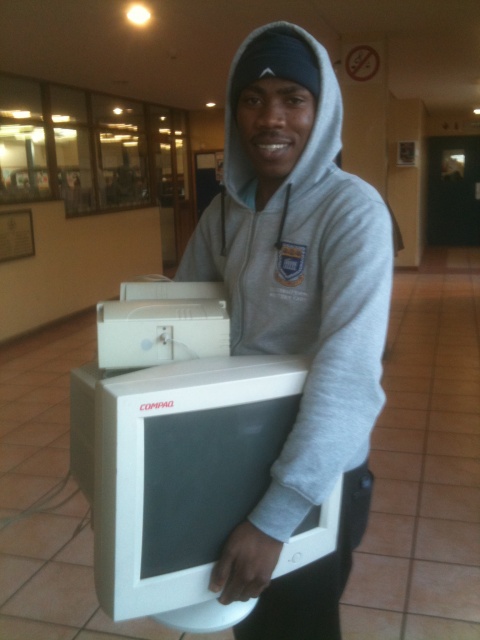

“IKAMVAYOUTH is like a home, a place where I go whenever I need help with anything. It gave me excellent opportunities to perform with well-known artists,” said Khayelitsha rapper Snarks Ou.
IkamvaYouth is a dynamic volunteer youth NGO established in 2003 that helps disadvantaged young people in Makhaza, Khayelitsha.
“The idea is that the youth can work towards pulling themselves out of poverty and into university and employment through peer-to-peer learning and support” said volunteer Joy Olivier.
The programme boasts a matric pass rate of 87-100 percent since 2005, with more than 70 percent of pupils accessing tertiary education over the past three years. Their success has led to the model’s replication in five townships in three provinces, and numerous accolades include the Mail & Guardian / Southern Africa Trust Drivers of change award last year.
But on Freedom Day the IkamvaYouth Centre was petrol-bombed and destroyed. Thobela Bixa, an IkamvaYouth board member and an ex-pupil of the organisation, who is doing his MA in chemistry at UCT said: “We are trying to free people from poverty and yet on Freedom Day our office was burnt. This means that people do not understand what Freedom Day stands for, and they do not understand that we’re trying to balance disparities and redress injustice.”
Joy said all their computers had melted, and all equipment, records and resources were reduced to ashes. Digital cameras for their photography project were destroyed, as were new smartphones they were using for a UCT/Nokia project to make documentaries.
“All the paintings by our creative learners in a project with Alex Krentz were burnt,” said Joy. “And we’re going to have to somehow replace our digicams, film equipment, computers, art materials and so much more. Essentially everything has gone.”
Artists such as Snarks Ou have hugely benefitted from being a bolunteer on the creative arm of IkamvaYouth on the media, image and expression programmes. “It is such bad news and I appeal to readers to help us start again because there are many children here in Makhaza who still need to benefit from this important organisation.” Realising that their dreams “is now going to be inmpossible unless we revive IkamvaYouth”.
“I need it, we need it, you ned it, because we are all in this together, wishing for a brighter future. IkamvaYouth gives hope to our community youth’s future.”
The rapper said IkamvaYouth was a place where people could go to any time of the day and work on their projects, rehearse and type their CVs. “It’s a place where no one pays to use the resources or for anyone’s help because we are all volunteers. It was a place that, importantly, kept children off the streets. I have been to Durban to perform my music because of this organisation. I have been doing big shows in Cape Town and that didn’t just happen because they liked me or something, but because I was dedicated and have been a learner with IkamvaYouth from the start,” said Snarks, who has written a song dedicated to IkamvaYouth.
“The song will be a bonus track on my album to be released later this year and will also be available as a free download on the IkamvaYouth website, he said.
Snarks said he was influenced by the hood and dope rappers. Born in the Eastern Cape, he was raised by a single grandmother. It was here that his love for rap music developed and by the age of 12 he had penned his first lyrics on cardboard boxes. His first hit song, Iyelenqe, was produced by Pzho. He has since worked with Mashonisa from BackYard Records, a talented producer in Khayelitsha. He has opened for both Backyard Crew and Teargas and has performed in and around Cape Town in sessions, clubs and music events, sharing the stage with rappers including Driemanskap, Rattex and Backyard Crew. He has also performed with DJ Fletcher, Digital Analog and members of Freshlyground.
An unsigned artist, Snarks is now looking to take his career to the next level, “but without the back-up of IkamvaYouth, or being signed up, this feels impossible”.
The rapper will do free mix tapes and will post music to his Facebook page. “Make sure you download that free music. And when my album comes out make sure you buy it! Help me reach my dream!”
Suzy Bell is a writer, poet and columnist runs Red Eye Creative where she and a small team create and curate contemporary cultural projects celebrating Africa in Cape Town.
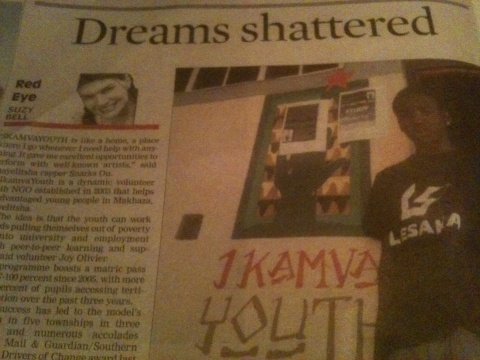
* IkamvaYouth is urgently calling for donations of digital cameras, film equipment, computers, office furniture or monetary donations to help fund the rebuilding. See www.ikamvayouth.org or call Winile Mabhoko at 0798854372, or email winile@ikamvayouth.org.

Following a land dispute and service delivery protests in Makhaza, IkamvaYouth’s head office in Makhaza was petrol bombed. Although there were ikamvanites in the office when the attack first began, they managed to escape and thankfully nobody was hurt. We’re now seeking support to help us refurbish the office and replace all we’ve lost.
[youtube]O_QcQZ2d3Co[/youtube]
Big up thanks to Bonny Astor and Anna Telford for making this film to help IkamvaYouth!

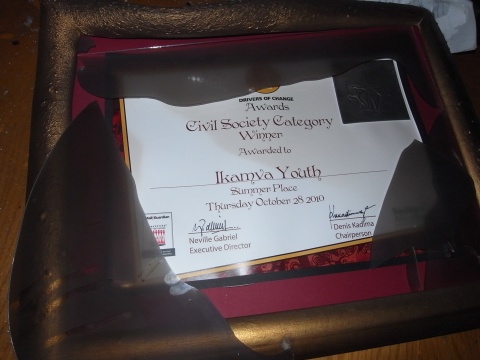

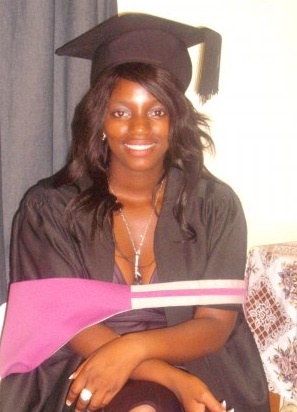
Today ikamvanites attended a memorial service at UWC to celebrate the life of Nomzamo Kali, who was from the Makhaza Class of 2005.
Nomzamo was a learner at Manyano High School when she became an ikamvanite, and she went on to achieve great things. She enrolled in 2006 at UWC at the Faculty of Economic and Management Sciences, studying information systems. In 2010 she moved on to Honours, and was to become a Masters student in 2011.
Thobela Bixa, an IkamvaYouth board member and classmate of Nomzamos at IkamvaYouth in 2005, gave a heartfelt speech. He urged those in attendance to continue to realise what Nomzamo stood for, and give back to their communities and assist disadvantaged youth to access tertiary education.
University officials appealed to lecturers and students in attendance to continue to strive to produce and be students of Nomzamo’s calibre, and the president of the SRC mourned the nation’s loss of a role model. Nomzamo was not only a high achiever, but also did not wait to give back, and was doing it right from when she left school.
Nomzamo was a talented, beautiful, smart and caring person who inspired many people. IkamvaYouth sends our deep condolences to Nomzamo’s family and friends.

Although the Careers Indaba happened *ages* ago, it was quite a crazy time for us and although we posted these pics and clips, we forgot to share the stories and news of what ended up being a really awesome day.

Collaborating with Equal Education was brilliant, and as a result, the day was bigger and better than the first Indaba we held in Khayelitsha in 2009. We leveraged contacts and lessons learned from the original two-week-long Indaba held at the Masiphumelele Library, to ensure that learners had a wide array of opportunities to interact with people from different institutions, career fields, organisations and companies. Have a look at the programme to see who was there. (careersindaba.program-2.pdf).
[video:http://www.youtube.com/user/ikamvayouth#p/u/25/oLwd3roI01s]
Aziza Mdee from Equal Education and IkamvaYouth interns Chris Fan and Miriam Rodriquez worked hard to ensure that we were organised and ready. The response was fantastic, and learners from all over Khayelitsha and many other communities streamed through the doors. Ms Makhoba, a teacher, inspired the audience, and Amanda Van der Vyver took everyone through the “Careers Exploration for Dummies” (career_exploration_for_dummies-1.pdf) booklet she created to help learners get the most out of the day.
Volunteers from various fields (from law, to medicine, fashion, engineering, hospitality services and the police service) were available for learners to interact with one-on-one, and many great connections were made. Some of these even lead to work experience opportunities!
We’re very grateful to everyone who made this very special day happen, and are looking forward to doing it all again in 2011!
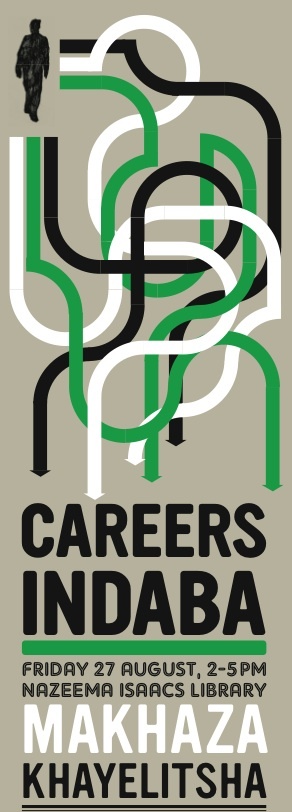

The following is an outline of the successes and obstacles experienced over the course of the four months that we spent working with 11th grade learners at IkamvaYouth-Makhaza Branch. First, it is important to note that we (my project partner Jonathan Wang, the learners, and myself) set out to accomplish a set of tasks that were unique, demanding, both technically and intellectually, and progressive from an educational perspective—such an approach is representative of IkamvaYouth as a whole, be that as organization, an idea, or as a group of wonderful people. As a result, we were bound to have a certain degree of success with our project no matter the obstacles we faced.
Our approach to the project was multifaceted and as such, sought multiple outcomes and objectives. Generally speaking, the focus of the project was to work with Ikamva learners in the testing of flexible, low-cost, open-source mapping techniques, which included hand-held GPS devices, digital cameras, and www.openstreetmap.org, to produce detailed street-level maps of areas around Khayelitsha—namely the shops along Landsdowne Road at R310 and Zwelitsha. More importantly, the focus of the project was to introduce learners to discussions of maps and their uses along with lessons on photographic techniques in order to get students to engage critically with their spatial environments—to begin to think about their neighborhoods as a network of roads and buildings that had relationships with one another, often mediated by concepts such as formality and informality. We also wanted to use the project as a way to introduce new technologies and software, such as Google Earth and Photosynth, to learners to try to provide them with a sense of how cutting-edge technologies are shaping the world. In doing so, we hoped that learners would have their minds opened, if only slightly, to the limitless possibilities that computers and science present us in the modern age.
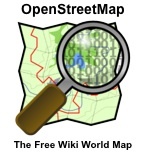
The first objective represents my research as a Visiting Scholar at the University of Cape Town. I am working with the Cape Urban Observatory Project to design and develop mapping techniques capable of efficiently and effectively mapping informal communities. Along with the project in Makhaza, I am working to map areas of Delft as well.
One of the main reasons we reached out to Ikamva to collaborate on this project was the fact that Ikamva learners come from the kinds of neighborhoods that our work seeks to explore. A central object of our work is to further the ends of community-based, participatory mapping as a means to promote community-driven development. As such, it was of great interest to us to try to involve learners in the scientific processes that produces authoritative information about the communities they live in. In terms of getting access to the areas to map and of getting learners involved in doing the actual mapping, we were quite successful. We were able to conduct the kind of tests we needed with equipment we had, and to this end, S’bu and Sinethemba (two of Makhaza Branch’s most dedicated tutors) were absolutely essential. They helped Jonathan and I navigate the neighborhoods of Khayelitsha, as well as capture the attention and imagination of the learners. Needless to say, I learned a great deal from the both of them about life in South Africa, life in the townships, and about the desire to overcome the obstacles to education that are presented a person as a result. For my education on these topics I am certainly indebted.
In terms of engaging with students, which represents the sort of second and third objectives to the project, I think we were pretty successful. Students were certainly interested in the digital cameras and immediately we saw them as a means to incentivize the actual work part of the mapping. We were able to design a couple of lessons that allowed learners to take the cameras home with them and use them to capture imagery of their neighborhoods to help with the map. They were all certainly keen because this also meant that they could use them to take pictures of their friends and families. We were able to project the imagery they took of their neighborhoods to discuss mapping and composition techniques, as well as concepts of mapping as a scientific approach, before going to do our field work. These in class exercises helped students stay engaged with the project material when they weren’t using the cameras or GPS devices in the field. We were also able to provide learners with DvD’s with their pictures and this gave learners a direct by-in to the project above the actual work itself.
Once in the field, things were always a little more challenging because as researchers we have to come in contact with the real world and doing so in Khayelitsha can be particularly difficult. This is where the majority of our obstacles occured. Language and cultural barriers alone between us as project leaders, the learners, and the community writ large presented certain obstacles to communication at times.
A second sort of related issue was the conspicuousness of the cameras while doing field work. They were often a source of confusion for residents of the community because many assumed us to be taking pictures of them to sell. Though we were able to explain to most people what we were doing, an improvement on this project would be to use GPS enabled cell phones that have a camera. That way we could collect image and GPS data while appearing less invasive to the community.
Over the next few months my project partner and I will be developing OpenSettlements.org which will be home to the maps and data we produced here while working at IkamvaYouth. We hope to explore the possibility of a map-based multimedia project using GPS enabled phones sometime next year, so that future learners can add to and build on the base-map data that the 11th graders helped create.
Ryan Bosworth
Visiting Scholar, University of Cape Town















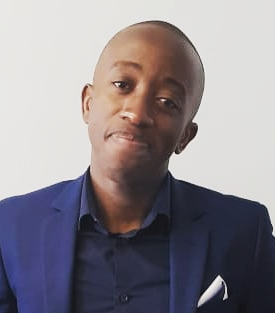 Lloyd Lungu
Lloyd Lungu